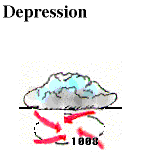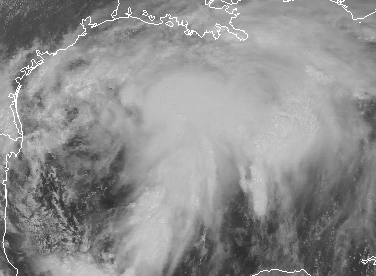Every creature is better alive than dead,
men and moose and pine trees,
and he who understands it aright
will rather preserve its life than destroy it.
~ Henry David Thoreau,
from 'Chesuncook' The Maine Woods, 1848 ~
It's already our exam week this following week. All of us were all busy doing their projects, outputs and reviewing. Me, even though I'm busy, I always remind myself to save energy. Keeping the door of the refrigerator always close is a big help to save electricity. Because I know that the refrigerator consumes too much electricity. I also said to my mother to not use chemical pesticides because it can destroy our environment. I also lessen watching TV, using my cellular phone, and using the computer to save energy and to finish my school works easier. I also help my mother plant trees in our garden.
There are many little ways to help protecting the environment. But with these little ways, we can make our planet a safe place to live.
Low Carbon Diet Journal -- July 23-29, 2012
El Niño and La Niña
Insights and Reflections
- Today, I learned that La Nina is described as cooler-than-normal sea surface temperatures in the central and eastern Pacific Ocean, near the equator off the west coast of South America. While, El Nino is like La Nina's brother, the totally opposite and attention grabbing brother. This is described as warmer-than-normal sea surface temperatures in the same area of the Pacific Ocean.
- I will apply my learning about this phenomenon in a way that when these phenomena happens, I can share my learnings to others and be ready for the effects of the both phenomenon.
- Learnings about this phenomenon are important because we can use it for the future use. And when time comes, we will be readier for its consequences. And we can use it when it is already happening.
- On a larger scale, I will share my learnings in these phenomena to help others be more aware of the different phenomena in our environment.
- I need to know more about how can we not be much affected when these phenomena are happening.
Tropical Depression
 | Once a group of thunderstorms has come together under the right atmospheric conditions for a long enough time, they may organize into a tropical depression. Winds near the center are constantly between 20 and 34 knots (23 - 39 mph). |

Image provided by TPC
* A tropical depression is an organized system of clouds and thunderstorms with a defined, closed surface circulation and maximum sustained winds of less than 34 knots (39 mph). It has no eye and does not typically have the organization or the spiral shape of more powerful storms. However, it is already a low-pressure system, hence the name "depression". The practice of the Philippines is to name tropical depressions from their own naming convention when the depressions are within the Philippines' area of responsibility.
Insights and Reflections
- Today, I learned that a tropical depression is an organized system of clouds and thunderstorms with a defined, closed surface circulation and maximum sustain winds of less than 34 knots (39 mph).
- I will apply my learnings about this phenomenon in a way that when a tropical depression comes, I can share my learnings to others and to be ready.
- Learnings about this phenomenon are important because tropical depression is a natural phenomenon that we experience often.
- On a larger scale, I will share my learnings in these phenomena because it is important to know the different phenomena that are country experience. And to be ready when it happens to our country.
- I need to know more about the formation of this and how can it affect our daily lives.
Monsoon

- Today, I have learned that Monsoon is a wind system that influences large climatic regions and reverses direction seasonally. It is a wind from the southwest or south that brings heavy rainfall to southern Asia in the summer.
- I will apply my learning about this phenomenon in a way that when there is a monsoon, I can be ready and I already know what can it bring to us.
- Learnings about this phenomenon are important because it can help us to be more aware what is happening in our environment.
- On a larger scale, I will share my learnings in these phenomena to help others to be ready whenever this phenomenon happens.
- I need to know more about what is the advantage and disadvantages of this phenomenon so I can share it to others.
Low Carbon Diet Journal -- July 16-22, 2012
"There is hope
if people will begin to awaken that spiritual part of themselves,
that heartfelt knowledge
that we are caretakers of this planet. "
~ Brooke Medicine Eagle ~
A very tiring week. Last week, we undergone many quizzes. All of us were busy. But it won't mean that we already forgot to help Mother Nature. Me, I used my papers wisely. If I'm going to write not so important things, I prefer to write in use papers.
While ago, me, my daddy and my Ate Wheina watched the movie "2012". It tells us about the 'end of the world'. And from that movie, I realized that our planet is changing. We need to help it change for the better. There are a lot of things that affect our planet in a bad way but the good news is that everyone can help to reduce them and do their bit for the environment.
These are the things I've done this week:
- Turning off the television,the computer and other appliances when not in use.
- Not using much electric fan because its cold already due to the cold weather.
- Using my bike when going to other baranggays.
- Not using the shower. Instead, I'm using the pail and dipper.
- Using eco-friendly bag.
Low Carbon Diet Journal -- July 9-15, 2012
"Humans are stewards of nature." It is one of the environmental principles. We, as humans, have to give importance what God gave us. We should protect it. We must take care of it for the future generations. We can help protect it in many ways. This week, I lessen the use of plastic bottles. I told my mother that I will bring water everyday. It also saves money. I am also using my cellular phone and our computer when only needed. It helps me to save energy. And whenever I brush my teeth, I'm using glass instead of letting the water flows continuously. I also use dipper when I'm taking a bath to save water. I know that I can help protecting Mother Nature in my own ways. And I promise to keep it a habit. :]
Low Carbon Diet Journal ~ July 2-8, 2012
My Low Carbon Diet Journal -- June 25 - July 1, 2012
Intertropical Convergence Zone
Intertropical Convergence Zone
The Intertropical Convergence Zone (ITCZ) is the region that circles the Earth, near the equator, where the trade winds of the Northern and Southern Hemispheres come together. Also known by sailors as doldrums. It was originally identified from the 1920s to the 1940s as the Intertropical Front (ITF), but after the recognition in the 1940s and 1950s of the significance of wind field convergence in tropical weather production, the term "ITCZ" was then applied. When it lies near the equator, it is called the near-equilatorial through. The ITCZ appears as a band of clouds, usually thunderstorms, that circle the globe near the equator. In the Northern Hemisphere, the trade winds move in a southwestern direction from the northeast, while in the Southern Hemisphere, they move northwestward from the southeast.South Pacific Convergence Zone (SPCZ)
The South Pacific Convergenze Zone (SPCZ) is a reverse-oriented, or west-northwest to east-southeast aligned, trough extending from the west Pacific warm pool southeastwards towards French Polynesia. It lies just south of the Equator during theSouthern Hemisphere warm season, but can be more extratropical in nature, especially east of the International Date Line. It is considered the largest and most important piece of the ITCZ, and has the least dependence upon heating from a nearby land mass during the summer than any other portion of the monsoon trough.Effects on weather
It may affect the amount of rainfall in many equatorial nations resulting on the wet and dry seasons of the tropics. Longer term changes in the ITCZ may cause severe droughts or flooding in nearby area. In some cases, the ITCZ may become narrow, then, it can be interpreted as a front along the leading edge of the equatorial air. Within the ITCZ, the average are slight. Early sailors named this belt of calm "the doldrums" because of the inactivity and stagnation they found themselves in after days of no wind.- Today, I learned that Intertropical Convergence Zone is also called doldrums. It is the area encircling the earth near the equator where winds originating in the northern and southern hemisphere come together. It is called "Intertropical Front" in 1920-1940. ITCZ appears as a band of clouds, usually thunderstorms that circle the globe near the equator. And it's location varies over time.
- This information will help me to become more aware of the weather and be ready for it.
- I would like to know more about ITCZ because I know that these are not all the things we need to know. And it can help us in everyday life.
- As a science class student, the knowledge I gained about this will help me to be a more science-oriented pupil. And I can share it to people who don't know much about the ITCZ and its effects on us.






